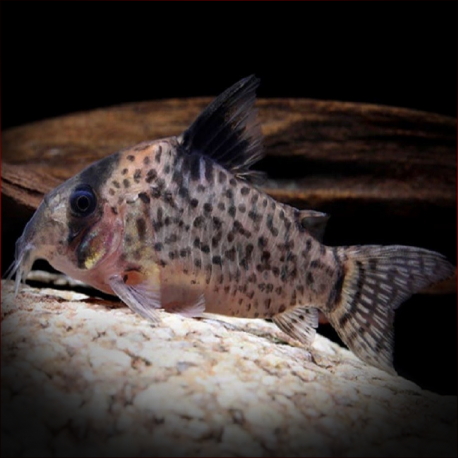More info
Datasheet
| Minimum Tank Size | 80 litres / 21.13 US gallons |
| Maximum Size | 5.5cm / 2.17inches |
General Description
The Corydoras Leucomelas, commonly known as the Blackfin Cory, is a species abundant in its natural waters, often shipped alongside similar-looking species making identification challenging. Belonging to the family Callichthyidae, these fish are part of the 'armoured' catfish group due to their bony plates. They possess a modified intestine enabling them to breathe air, essential for survival in oxygen-deprived environments.
Aquarium Setup
For a suitable environment, a tank with a minimum size of 80 litres is recommended. Use a fine sand substrate or clean rounded gravel and provide varied decor for security. Detailed guidelines are available in the setup table.
Behaviour
Peaceful and sociable, the Blackfin Cory thrives in groups of 4-6 individuals. They can sometimes exhibit air-breathing behaviors by rising to the tank's surface to gulp air. Caution is advised when handling as their pectoral-fin spines can cause a painful sting due to gland secretions believed to be mildly toxic.
Feeding and Diet
As foragers, Corydoras Leucomelas are omnivores accepting dried, live, and frozen foods like chironomid larvae and Tubifex. A diverse diet is crucial for their optimal health, and they should not rely on leftovers for sustenance in the aquarium.
Reproduction & Dimorphism
Breeding Blackfin Cory follows standard Corydoras practices, requiring a higher male-to-female ratio, cool water changes, and oxygenation boosts to induce spawning. Females are larger and broader than males, with sexually mature individuals displaying visible differences in body shape.
Habitat and Distribution
These fish are commonly found in blackwater rivers with acidic, tannin-stained water in Peru's upper Amazon region. In their natural habitat, they form large schools over soft, muddy substrates, reflecting their preference for such environments. Their distribution is primarily centered around the Yarinacocha region.
Please refer to the table for detailed tank setup information.

